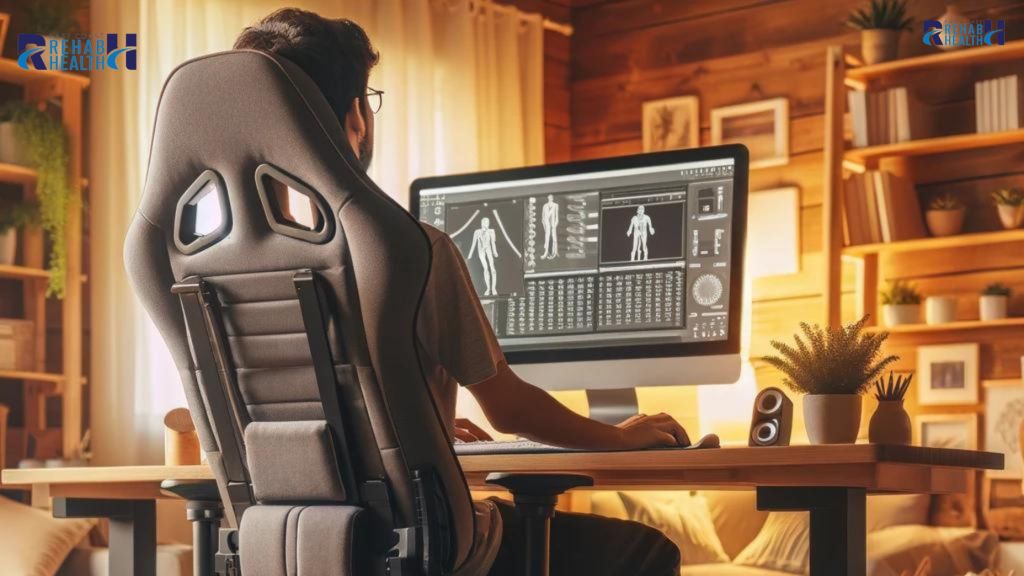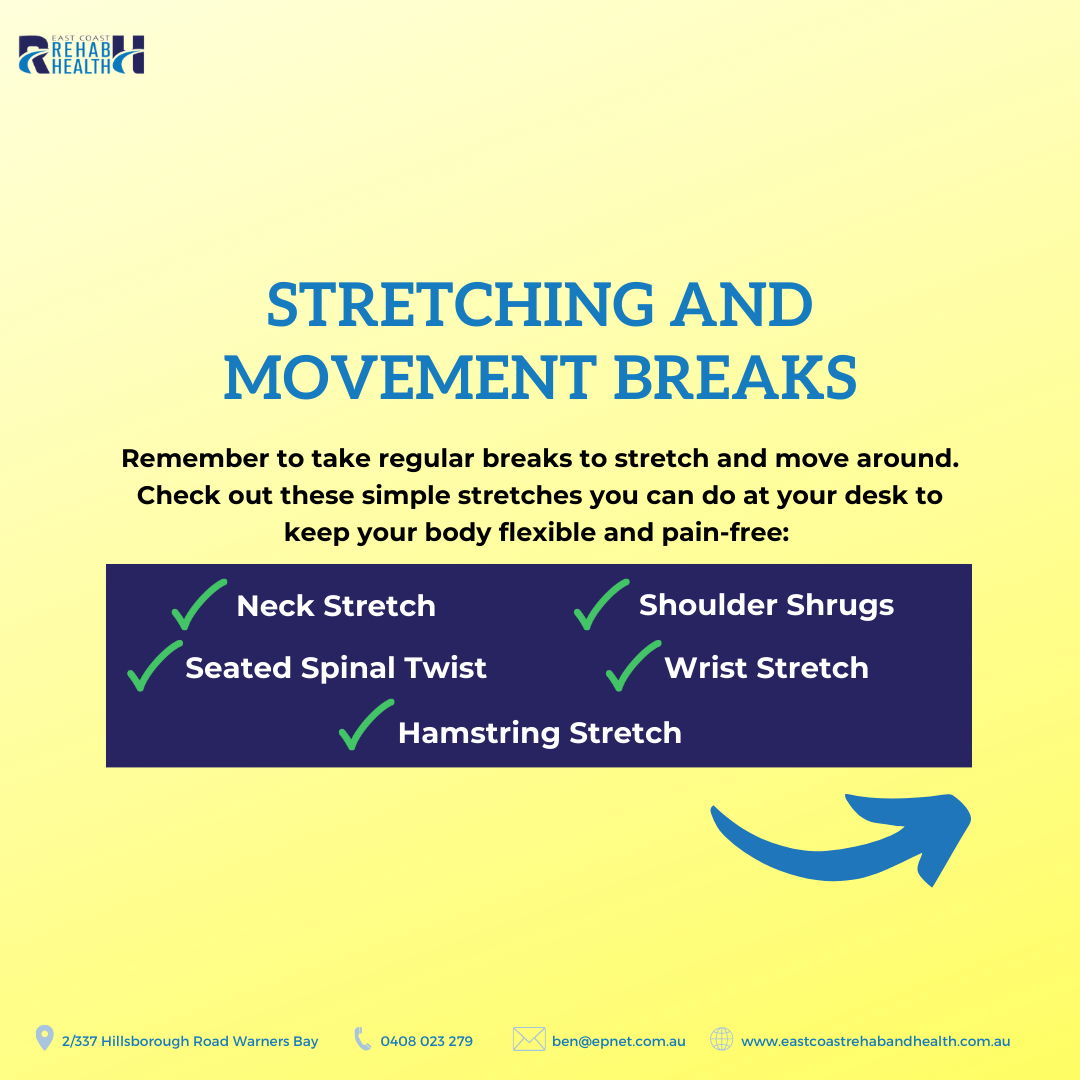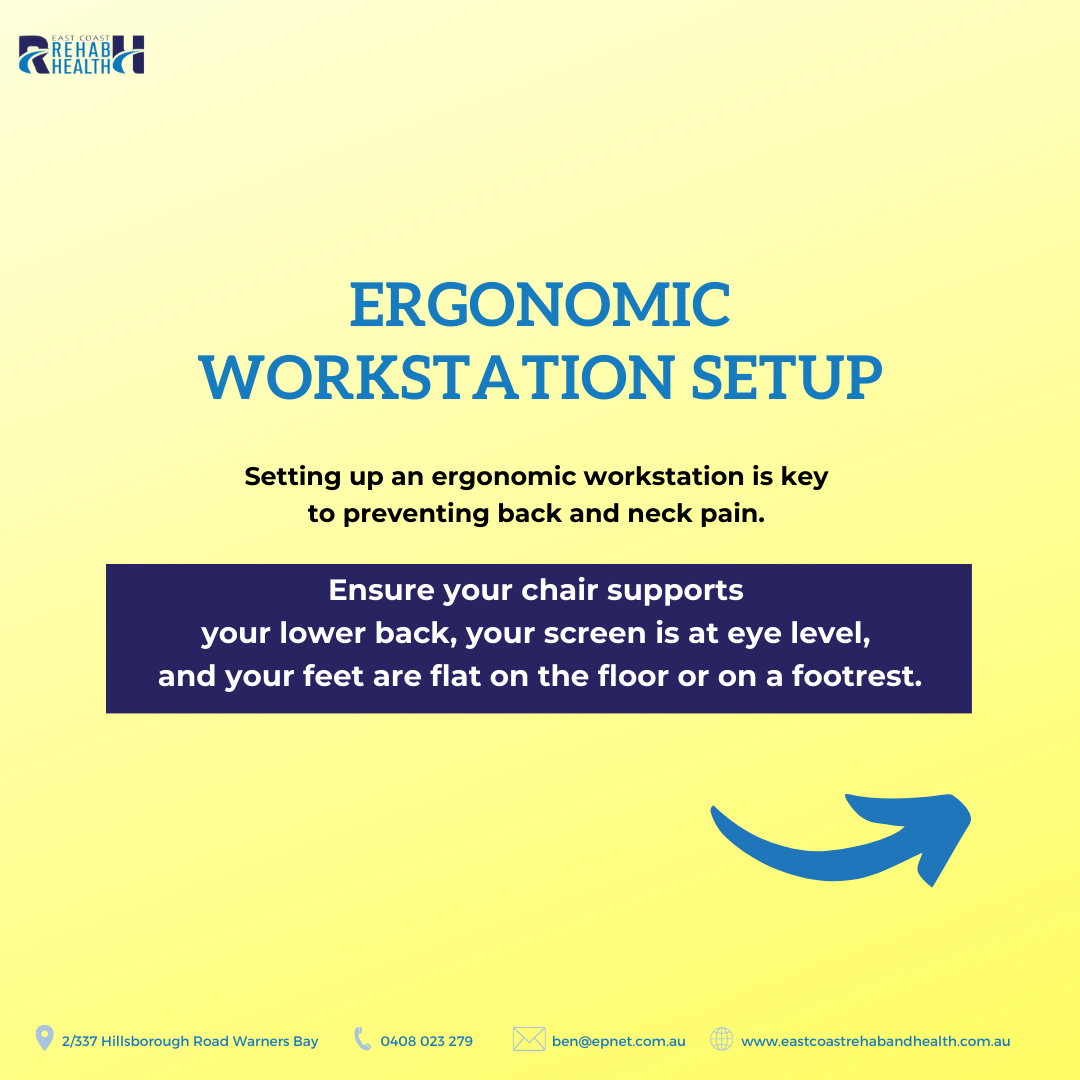Postural and ergonomic problems are common in today’s modern lifestyle, as many of us spend countless hours sitting at desks. Whether you’re working from home or in an office, understanding and addressing these issues is crucial for maintaining good health and productivity. This blog post, brought to you by East Coast Rehab & Health, aims to raise awareness, engage our community, and highlight the benefits of exercise physiology in managing and preventing postural and ergonomic problems.
What Are Postural and Ergonomic Problems?

Postural and ergonomic problems arise when the natural alignment of the spine is disrupted due to prolonged periods of sitting, improper sitting or standing positions, and repetitive movements. Ergonomic problems, on the other hand, result from poorly designed workspaces that do not support the body’s natural movements and postures. Both types of problems can lead to discomfort, pain, and long-term health issues if not addressed promptly.
Common Postural Problems

- Forward Head Posture: Often caused by leaning forward while working on a computer or looking at a smartphone, this posture puts excessive strain on the neck and upper back muscles.
- Rounded Shoulders: Slumping or hunching forward can lead to rounded shoulders, causing muscle imbalances and shoulder pain.
- Anterior Pelvic Tilt: Sitting for extended periods can cause the pelvis to tilt forward, leading to lower back pain and tight hip flexors.
- Swayback: This posture involves an excessive inward curve of the lower back and can result from standing or sitting with poor lumbar support.
Common Ergonomic Problems

- Improper Chair Height: A chair that is too high or too low can lead to improper alignment of the hips, knees, and feet, causing discomfort and strain.
- Poor Desk Setup: A desk that is too high or too low can cause awkward arm and wrist positions, leading to strain and repetitive stress injuries.
- Monitor Position: A monitor that is not at eye level can cause neck and upper back strain as you constantly look up or down.
- Keyboard and Mouse Placement: Incorrect placement can lead to wrist and hand discomfort, increasing the risk of carpal tunnel syndrome.
Impact on Health

Postural and ergonomic problems can significantly impact your overall health. Poor posture can lead to muscle imbalances, joint pain, and reduced mobility. Over time, these issues can contribute to chronic conditions such as:
- Musculoskeletal Disorders (MSDs): These include conditions like carpal tunnel syndrome, tendonitis, and lower back pain, often caused by repetitive movements and poor posture.
- Reduced Circulation: Prolonged sitting and poor posture can impede blood flow, leading to conditions like varicose veins and deep vein thrombosis (DVT).
- Respiratory Issues: Slouching can compress the lungs and diaphragm, reducing lung capacity and making breathing more difficult.
- Digestive Problems: Poor posture can compress the digestive organs, leading to issues like acid reflux and constipation.
According to statistics from Ergonomics Now, more than 60% of workplace injuries are related to muscle and soft tissue injuries, costing the community up to half a billion dollars each year. In a 2002 study of 60 people working at a Sydney call centre, it was found that although only two or three people officially reported Occupational Overuse Syndrome (OOS), up to 70% claimed to have aches and pains. After instruction about posture, the number experiencing pain fell markedly.
Solutions and Preventive Measures

- Ergonomic Workstation Setup: Ensure your chair supports your lower back, your feet are flat on the floor, and your monitor is at eye level. Use ergonomic accessories like keyboard trays and footrests to maintain proper alignment.
- Regular Movement and Stretching: Take frequent breaks to stand, stretch, and move around. Simple stretches like neck rolls, shoulder shrugs, and hamstring stretches can alleviate tension and improve flexibility.
- Strengthening Exercises: Engage in exercises that strengthen your core, back, and shoulder muscles. Activities like yoga and Pilates can help improve posture and reduce pain.
- Awareness and Education: Educate yourself on the importance of good posture and ergonomics. Being mindful of your posture throughout the day can help you make necessary adjustments and prevent problems before they start.
The Role of Exercise Physiology
Exercise physiology plays a critical role in managing and preventing postural and ergonomic problems. At East Coast Rehab & Health, our exercise physiologist, Ben Larner, specializes in developing tailored exercise programs designed to address specific musculoskeletal issues. By focusing on individual needs, Ben helps clients improve their posture, reduce pain, and enhance overall physical function.
Postural and ergonomic problems are essential issues to address for maintaining good health and productivity. By making simple adjustments to your workspace and incorporating regular movement and strengthening exercises, you can significantly reduce the risk of musculoskeletal issues and enhance your overall well-being. If you’re experiencing persistent pain or discomfort, consider consulting with an exercise physiologist like Ben Larner from East Coast Rehab & Health, who can provide personalized guidance and support.
Join us on a journey to a healthier, pain-free life. Contact East Coast Rehab & Health today to book a session with Ben Larner and start improving your posture and ergonomics. Take the first step towards a more comfortable and productive work environment!




